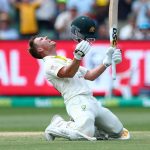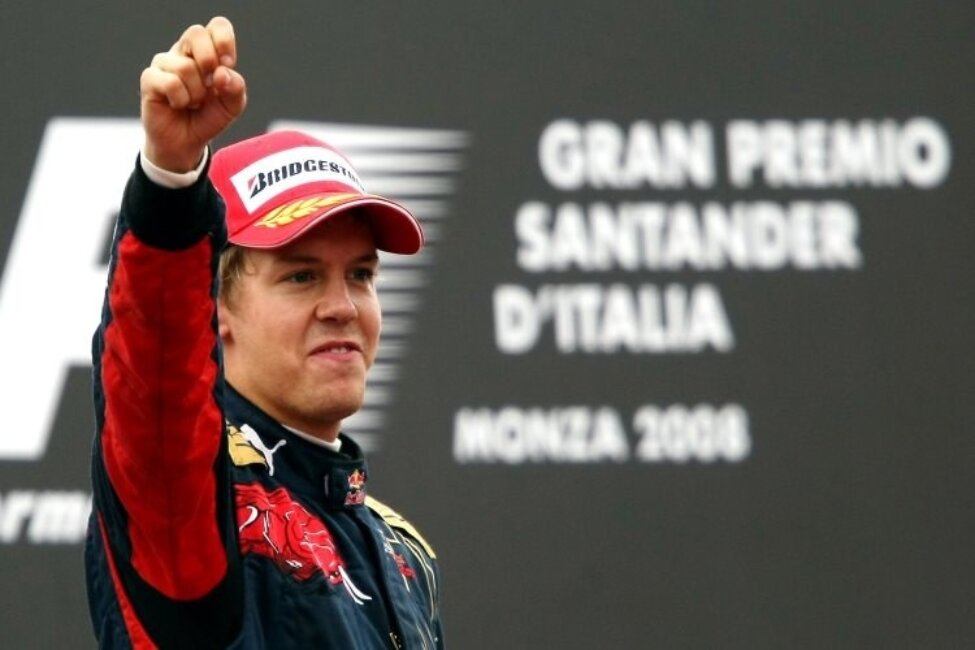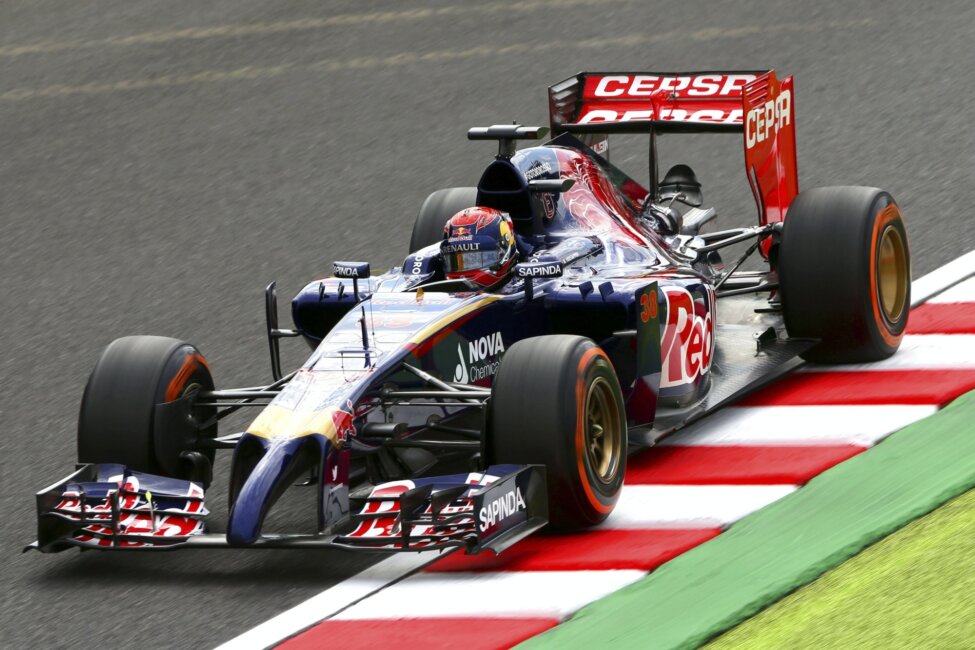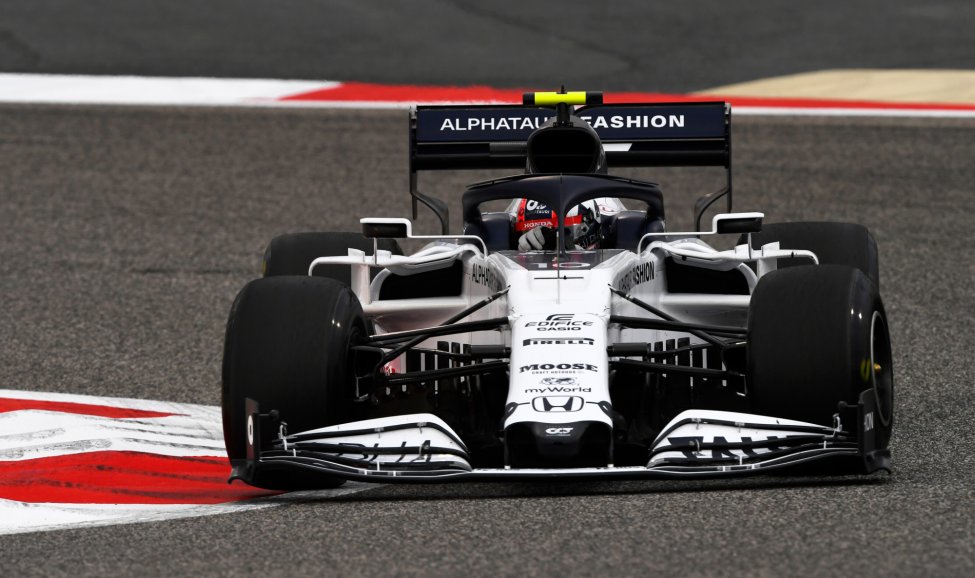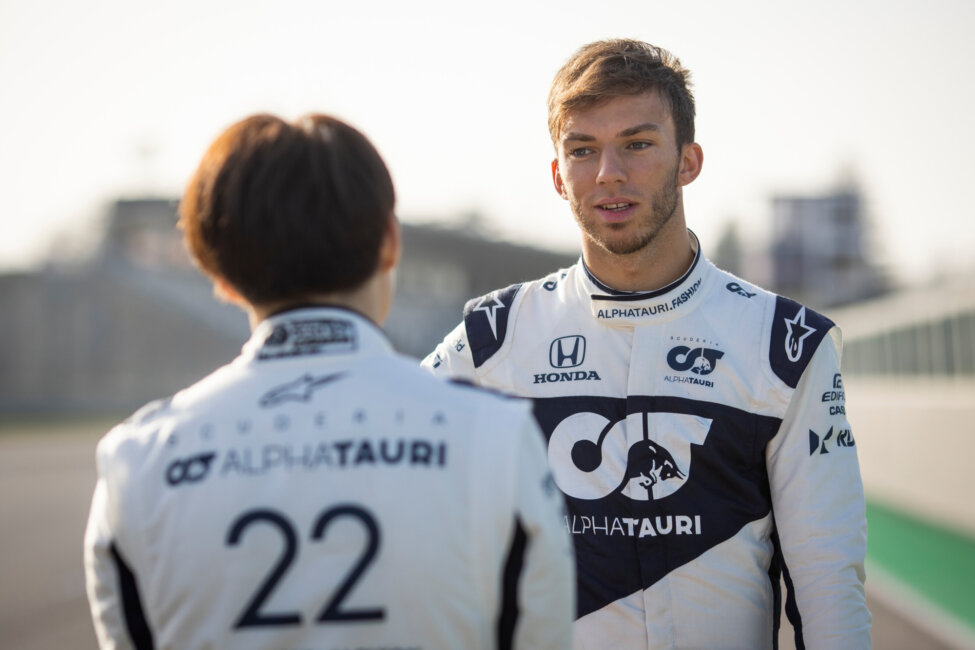AlphaTauri – Latest F1 news about the AlphaTauri F1 team
Pierre Gasly continued to cement his role as team leader at AlphaTauri in 2021, having helped the squad to achieve P6 in the Constructors’ Championship. Rookie teammate Yuki Tsunoda endured mixed fortunes, and will be hoping for better in 2022.
Origins as Minardi
The AlphaTauri team’s origins date back to Minardi, who competed in Formula 1 from 1985 to 2005. Although they had a large fan base, the Italian outfit never finished on the podium and only secured fourth place on three occasions.
Owner Paul Stoddart asked any potential buyers to maintain Minardi’s traditional base in Italy, with Red Bull GmbH agreeing to keep the squad’s headquarters in Faenza until at least 2007.
Although Red Bull abandoned the Minardi name, they did use Italian in the team’s new moniker to hint at their heritage. Initially called Squadra Toro Rosso, the name was changed to Scuderia Toro Rosso, given that Scuderia is commonly applied to Italian motor racing outfits like Ferrari.
Beginnings of Scuderia Toro Rosso
Vitantonio Liuzzi and Scott Speed were Toro Rosso’s first drivers in 2006, with Neel Jani the test/third driver. The 2006 chassis, the STR1, was a modified version of Red Bull‘s car from the previous season.
The team used Minardi’s supply of 2005-spec Cosworth engines, as the newly-built models were too expensive for smaller outfits. Teams such as Super Aguri and Midland argued that the continuation of the arrangement that Minardi had shouldn’t be allowed, given that it was based on their poor financial situation. The cars also carried Michelin tyres.
Toro Rosso struggled as the 2006 season progressed, with their competitors developing their new V8 engines. The squad’s best result came thanks to Liuzzi’s eighth place finish at the United States Grand Prix.
The team finally switched to 2006-spec Ferrari V8 engines the following year, taking over the contract that Red Bull broke with the Scuderia in favour of Renault power. Liuzzi and Speed were brought back for a second season, with Sebastien Bourdais became the test driver. Much like in 2006, Toro Rosso had a difficult time for much of the year due to driver errors and reliability woes.
Having failed to score a point up to that point in the season, Speed was dropped after the European Grand Prix. The American was replaced by BMW Sauber development driver Sebastian Vettel, and results improved before the end of the season, with the German finishing fourth and Liuzzi six at the Chinese Grand Prix. This marked Toro Rosso’s best result up to that point.
Vettel stuns the F1 world at Monza
Vettel and Bourdais drove for the team in 2008, with the latter scoring his first points with a seventh-place in Australia. Vettel finished fifth in Monaco as the team improved over the course of the year, and both cars ran in the top six for much of the Belgian Grand Prix. Despite running as high as third and fourth on the final lap, Vettel and Bourdais eventually finished fifth and seventh respectively.
Nothing compared to the shock that Toro Rosso pulled off at the wet Italian Grand Prix. Vettel claimed pole position before taking his and the team’s debut victory ahead of Heikki Kovalainen and Robert Kubica. It was the first win for an Italian-based team other than Ferrari since the 1957 German Grand Prix. It was also the first and only win so far for a Ferrari engine in a customer chassis.
Vettel ended the year scoring 35 of the team’s 39 points, helping Toro Rosso to outscore the senior Red Bull team for the first and only time in their history. The German’s efforts also helped him earn a call up to Red Bull for the 2009 season.
Step back followed by improvement
With Vettel moving on and replacing the retired David Coulthard, Bourdais was joined by Sebastien Buemi for the 2009 season.
Team principal Franz Tost stated before the year began that it would be tough for the team to replicate their 2008 form, and that proved to be the case. Bourdais was let go in July due to disappointing results, and Jaime Alguersuari was brought in as his replacement. Toro Rosso ended the year 10th in the Constructors’ Championship with just eight points, having been overtaken by Force India thanks to their podium finish in Belgium.
Buemi and Alguersuari returned in 2010, and the latter scored his first F1 points by finishing ninth at the Malaysian Grand Prix. Toro Rosso went on to collect points on another six occasions, ending the year ninth with 13 points ahead of Lotus, HRT and Virgin.
Both drivers were brought back in 2011 while Daniel Ricciardo, the squad’s reserve test driver, took part in every free practice session. Toro Rosso made a significant step forward from the previous year, with Buemi scoring points at the season-opener in Australia. The team ended the year with 41 points, finishing three points back of Sauber for seventh.
Ricciardo and Jean-Eric Vergne became Toro Rosso’s drivers for the 2012 Formula 1 season, and things started off well after points finishes in Australia and Malaysia. However, the team would have to wait until Round 12 in Belgium to add to that figure. While Toro Rosso’s form improved from there, they ended the campaign with just 26 points.
Both drivers achieved similar results during the following year, as Toro Rosso finished eighth with 33 points, though they scored 28 more points than Williams.
Ricciardo departure and Verstappen’s arrival
Prior to the 2013 Italian Grand Prix, Red Bull announced that Ricciardo would replace Mark Webber at the main outfit in 2014. Daniil Kvyat was brought in as his replacement, while Toro Rosso also made the switch to Renault power after signing a long-term deal with the French manufacturer.
Vergne qualifed sixth for the Australian Grand Prix, the team’s best starting position since the 2013 race at Silverstone. The Frenchman finished eighth and Kvyat ninth, while the Russian added to his tally with a 10th place finish in Malaysia.
Prior the Belgian Grand Prix, Toro Rosso announced that 16-year-old Max Verstappen would replace Vergne at the end of the season. The news left the Frenchman without a seat. However, with Red Bull announcing that Kvyat would replace the departing Vettel at season’s end, his hopes of retaining a seat were boosted.
In the end, though, Carlos Sainz was chosen to partner Verstappen, while Toro Rosso ended the season in seventh with 30 points.
The young line-up proved to be a success, with Sainz scoring points on his debut while Verstappen retired with an engine failure. The Dutchman secured two fourth-place finishes in Hungary and the United States, and Toro Rosso finished the year with 67 points, their most successful F1 season in terms of points. Verstappen scored 49 of those points compared to Sainz’s 18.
Toro Rosso opted for Ferrari engines in 2016, using 2015 power units. This rekindled the partnership that saw them use Scuderia power from 2007 to 2013. Following Kvyat’s slow start to the campaign, Red Bull opted to promote Verstappen to the senior team while sending the Russian back to Toro Rosso. The outfit ended the year seventh in the Constructors’ Championship with 63 points, just 13 back from McLaren.
After only one year with Ferrari power, Toro Rosso switched back to Renault for the 2017 campaign, and the driver line-up of Sainz and Kvyat was retained. Pierre Gasly was announced as Kvyat’s replacement for an unspecified number of races starting with the Malaysian Grand Prix, ahead of his 2018 move to the team.
Sainz, who had already agreed to join Renault in 2018, was allowed to join the French outfit at the United States Grand Prix and, with Gasly unavailable due to a clash with the final round of the Japanese Super Formula Championship, Brendon Hartley and Kvyat drove for the team. However, Red Bull advisor Helmut Marko announced soon after that the Russian would not be returning, with Hartley and Gasly set to be the pairing for the remainder of the year.
Toro Rosso secured P7 in the Constructors’ standings, with 53 points.
Switch to Honda power
Toro Rosso terminated their Renault deal in order to sign a full-works contract with Honda ahead of 2018. This move came about after McLaren severed their ties with the Japanese manufacturer, allowing Toro Rosso to earn direct factory support as a flagship team.
Both Gasly and Hartley returned but, while the Honda engine showed promise in pre-season testing, it didn’t translate into success once the campaign began. Reliability issues plagued the team throughout the year, especially affecting Hartley, and this resulted in Toro Rosso scoring just 33 points, 29 of which came from Gasly.
The Frenchman was promoted to Red Bull in 2019, with Kvyat returning to Toro Rosso as his replacement after being dropped in 2017. Hartley was also let go in favour of Alexander Albon. The Thai-British driver started the season strongly, finishing 10th in Australia while keeping Gasly behind him for much of the race. Both Toro Rosso drivers finished in the points in Monaco, the first time the team had done so since the 2017 Spanish Grand Prix.
Kvyat scored the team’s first podium finish since the 2008 Italian Grand Prix thanks to a third-place finish at a rain-affected race in Germany, with Albon finishing sixth. With Gasly unable to leave his mark at Red Bull, he was sent back to Toro Rosso, and Albon was promoted to the senior team. The move paid off for both sides, as Albon consistently finished in the points while Gasly rediscovered his form with the Faenza-based outfit.
At the chaotic Brazilian Grand Prix, Gasly secured the team’s third podium finish after fending off Lewis Hamilton to the finish line to claim second, while Kvyat’s points in Abu Dhabi were the team’s 500th. Toro Rosso ended the year sixth with 85 points, just six back from Renault.
AlphaTauri rebrand
Toro Rosso were rebranded as Scuderia AlphaTauri ahead of the 2020 F1 season, in order to promote Red Bull’s fashion label of the same name.
Kvyat and Gasly made up the team’s driver line-up, and Gasly scored points at the season-opening Austrian Grand Prix. The newly-named outfit secured their first podium and win at the Italian Grand Prix, with Gasly claiming a debut career victory ahead of Sainz and Lance Stroll, becoming the first French driver to win since Olivier Panis at the 1996 Monaco Grand Prix.
It also marked the first time since the 2012 Hungarian Grand Prix that there was not a Red Bull, Mercedes or Ferrari driver on the podium.
AlphaTauri ended the year with 107 points, just 24 away from Ferrari in sixth in the standings. While Gasly was retained for the 2021 campaign, Kvyat was replaced by rookie Yuki Tsunoda, who made the step up from Formula 2.
Gasly thrives but Tsunoda struggles
The 2021 season initially looked to have begun positively for AlphaTauri, with Gasly lining up fifth on the grid for the opening race in Bahrain. However, the Frenchman suffered damage in the Grand Prix following contact with Ricciardo, and was forced to retire as a result.
Meanwhile, Tsunoda scored points on his debut with a P9 finish after qualifying in 13th. However, a run of difficult race weekends followed for the Japanese driver, with one of the worst being the Spanish Grand Prix. After a Q1 exit in qualifying, Tsunoda made comments questioning whether he had the same equipment as Gasly, though later apologised for the remarks.
Whilst Tsunoda seemed to be struggling, Gasly had a steady run of points finishes in the first few races, and then secured AlphaTauri’s first and only podium of the year at the Azerbaijan Grand Prix, despite suffering with an engine problem.
Ahead of the race in Baku, team boss Franz Tost decided to move Tsunoda from the UK to Italy so that he could be more closely monitored. This seemed to pay off, as Tsunoda scored his first points since Bahrain in the Grand Prix.
Both Gasly and Tsunoda finished fifth and sixth respectively in the chaotic Hungarian Grand Prix, marking a significant points haul for the team. The Italian Grand Prix proved to be a nightmare weekend, though. A crash put Gasly out of Saturday’s Sprint race, and he then recorded a DNF in Sunday’s event. Tsunoda didn’t fare much better, as the Japanese driver clashed with Robert Kubica in the Sprint and was unable to start the Grand Prix due to brake issues.
There were points for the team at most of the remaining races in the campaign, though, with their best overall result coming at the season-closing Abu Dhabi Grand Prix. Tsunoda finished fourth, his best result to date, whilst Gasly was just behind in fifth.
AlphaTauri earned a total of 142 points by the end of the year, putting them sixth in the Constructors’ Championship. 110 of these points came from Gasly, who took P9 in the World Championship.
What can AlphaTauri achieve in 2022?
Both Gasly and Tsunoda remain with AlphaTauri in 2022. Tsunoda, though, expressed surprise at the team’s decision to sign him again, given the number of crashes that he had in 2021.
Having established himself as a team leader, Gasly is hoping to build on this further and has vowed to be the “best Pierre Gasly ever in Formula 1” in the new season. As for Tsunoda, team boss Tost is hopeful that the team’s patience with the youngster will pay off.
With new technical regulations being introduced into the sport for 2022, there is uncertainty about how the pecking order could be affected. Gasly believes that this could provide a good opportunity for AlphaTauri.



